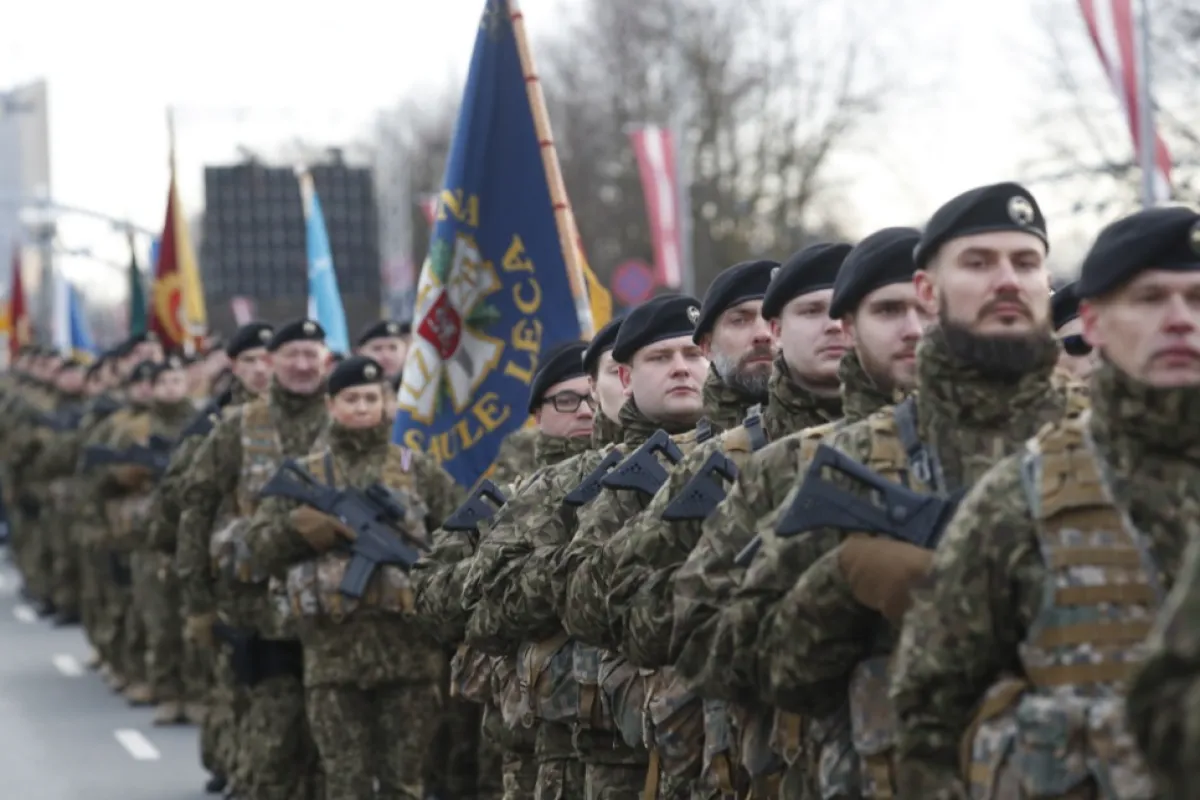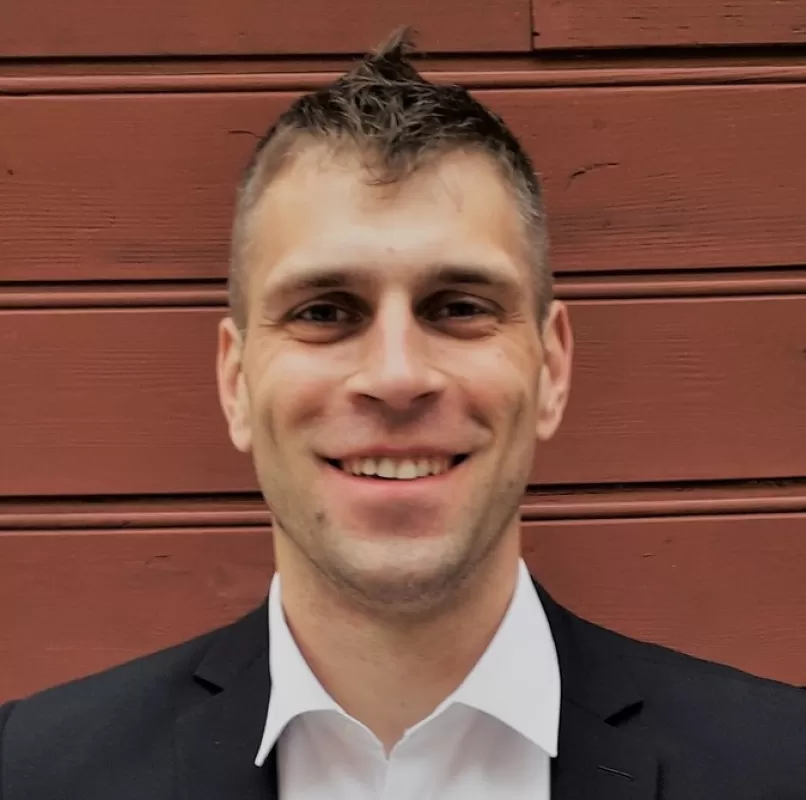
Latvia is making participation in the state defense service (SDS) mandatory, as part of a larger drive to strenghten its security.
Russia’s attack on Ukraine determined Latvia to beef up its security
Discussions about Latvia's ability to defend itself in the case of an invasion became more relevant in 2014, when Russia annexed Ukraine’s Crimean peninsula and started the war in that country’s Donetsk and Luhansk regions. Before that, Latvia’s defense sector had been underfinanced, partly due to the severe economic crisis that started in 2008. Riga failed to earmark 2% of its GDP for defense, as required by NATO. At the onset of the crisis, in 2008, Latvia earmarked 1.6% of GDP for defense, but that included expenses for the restoration of monuments, publishing books and even supporting professional sports clubs. During the crisis – from 2008 until 2012 – defense expenses were reduced by around 40%. Since 2014, the situation has changed: funding increased and NATO allies arrived in Latvia. After the 24th of February, 2022, when Russia launched its full-scale invasion in Ukraine, Riga decided to increase its defense spending up to 3% of GDP and new, modern weapons came to Latvia’s disposal.
One further step to beef up security is the introduction of the SDS. „Sure, this is the reaction to Russia’s aggression and the geopolitical changes”, the secretary general at Latvian Transatlantic Organisation (LATO), Sigita Struberga, told Veridica. Until 2014, it seemed that challenges to European security policy were impossible, and by 2022 - that large scale conventional war between nations had become history. But the Russian invasion showed the opposite. Therefore, Latvia has to react accordingly - SDS, which means military training for large population groups, is one of the answers, explains Struberga.
The SDS: more than just some extra manpower for the army
„SDS [strenghtens] Latvia’s defense capabilities by attracting and training as many Latvian citizens as possible” according to Toms Rostoks, a senior researcher at the Centre for Security and Strategic Research at the National Defense Academy of Latvia. It means deter, resist, and overpower the opponent, and protect the border. In the Latvian case, attention is focused on Russia, hoping that Latvia will be able to defend its borders, not relying on NATO’s help only, Rostoks told Veridica.
Struberga notes several other functions of the SDS. First of all, people who would be trained in this program could also help in civil operations in Latvia, second – the program can serve as an integration tool. In other words, by living in similar conditions and performing similar tasks in the SDS, people of different nationalities in Latvia could become closer. “The possibility that the attitude towards the Roma could change is greater than pretending they don't exist [as it is now]” Struberga said.
The SDS is aimed at Latvian citizens aged 18 to 27, and is optional for women. Latvia would thus join other NATO and/or EU countries where the SDS is mandatory: Estonia, Lithuania and Finland, as well as Austria, Cyprus, Denmark, Greece, and Sweden.
An antidote to Wagner’s threat?
The question whether Russia’s Wagner mercenary army threatens Latvia, as well as to Lithuania and Poland, has become relevant since the group’s relocated an estimated 2 to 4,000 of its fighters to Belarus following its late June rebellion. Wagner’s purpose and goals in Belarus are unclear. It has been speculated that the group could stage an invasion in northern Ukraine, or it might send its fighters to Africa, where it is active in several countries, or conduct some special operations – which might be directing migrants to the borders or even sending groups of saboteurs – in relation to Latvia, Lithuania, and Poland. Belarus’ authoritarian leader Alexander Lukashenko teased that it is difficult to keep the Wagner fighters calm, because they want to visit Poland.
Statements by Latvian institutions have varied. While the newly elected president Edgars Rinkēvičs warned that Wagner presence increases the tension and the threats of hybrid-war, the Ministry of Defense and the State Security Service said the opposite – that the security situation has not worsened. Some experts are even saying that Lukashenko has become some kind of comedian who should not be taken seriously.
This is where the SDS might prove its usefulness. Both Struberga and Rostoks think that people trained in SDS must be capable enough to protect the country even in the case of hybrid-war where military, cyber and informational elements are mixed. However, there is still some way to go before that capability might be achieved. Struberga pointed out that enlistment has just started on July the 1st, and recruits are still learning how to hold a gun, so they are definitely not ready to face battle-hardened Wagner fighters. Also, it’s not clear what the size of SDS would be, as even the first drive to recruite them failed to meet the 300-strong target – only 254 began their training. However, Rostoks aknowledges that, considering the way how Russia started the invasion in Ukraine both in 2014 and 2022, Special Forces would be more suitable to protect Latvia as they would take on their Russian counterparts. At the same time, Rostoks emphasizes that the SDS will also have to be ready to get involved in critical moments.
No weak links on NATO’s Eastern flank
Rostoks remembers that many years ago, Estonia, for which defense was a priority, openly acknowledged that it was more concerned about the Latvian-Russian border, which was less protected than its own border with Russia. The concern was justified, says the researcher, who noted that Latvia still lags behind Estonia, for example, in terms of the number of reservists. Rostck did say that the Estonians have their own challenges, without elaborating on them. As far as Lithuania is concerned, its larger population (2.7 million people compared to Latvia’s less than 1.9 million), makes it easier to set up a defense force. Therefore, in spite of all the security problems Latvia has, it would be simplistic to say that the country is the weakest link on NATO's eastern flank.
“There were several reasons for the decision to end compulsory military service [in 2006]” Struberga told Veridica. “The number of our soldiers in the professional service met the requirements for the geopolitical situation at that time. There have been no studies or articles that our professional units are less capable than Lithuanian or Estonian ones. On the contrary, there were sometimes discussions about the fact that ours can be more effective. At this very moment, looking at the geopolitical situation, a reasonable decision is to restore the SDS” she explains. Besides the number of soldiers is not the only way how to determine the state’s capability to protect itself. In the Latvian case, very important is to maintain and improve the military infrastructure where a lot of things have been done but a lot of things still must be done.
The Latvian army currently has in its ranks some 6600-6700 professional soldiers. There are also more than 8000 members in National Guard and around 6000 army reservists. In other words, now, around 20 000 people would be able to protect Latvia in the case of military or hybrid attack. There are also plans to increase in the coming years both the size of the army and that of the National Guard.
Also, some 1700 NATO troops have been deployed to Latvia. More are set to arrive after the Selia military range, currently being built in central Latvia, would be completed.
And all these combined forces are just there for an initial response. In case of need, NATO would be ready to back Latvia with its full might.


